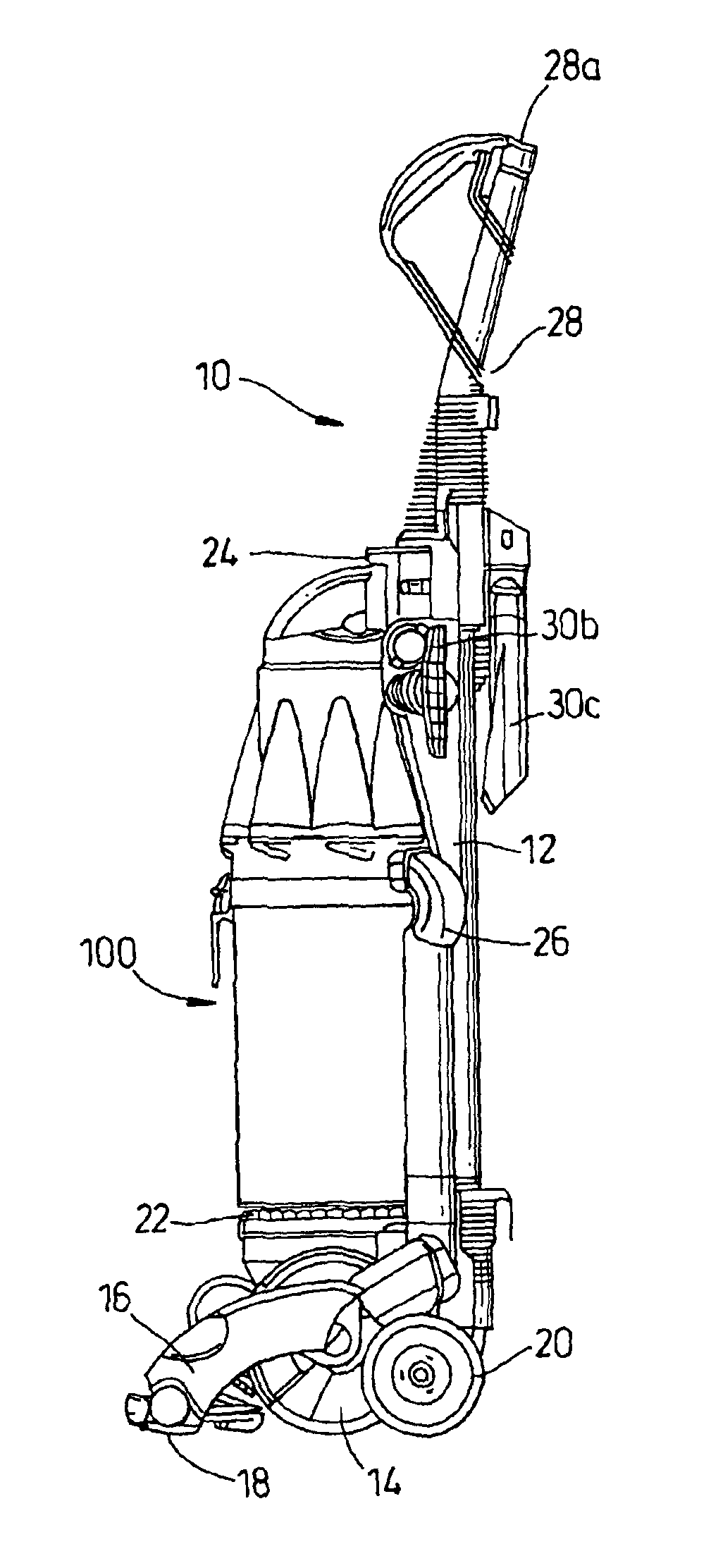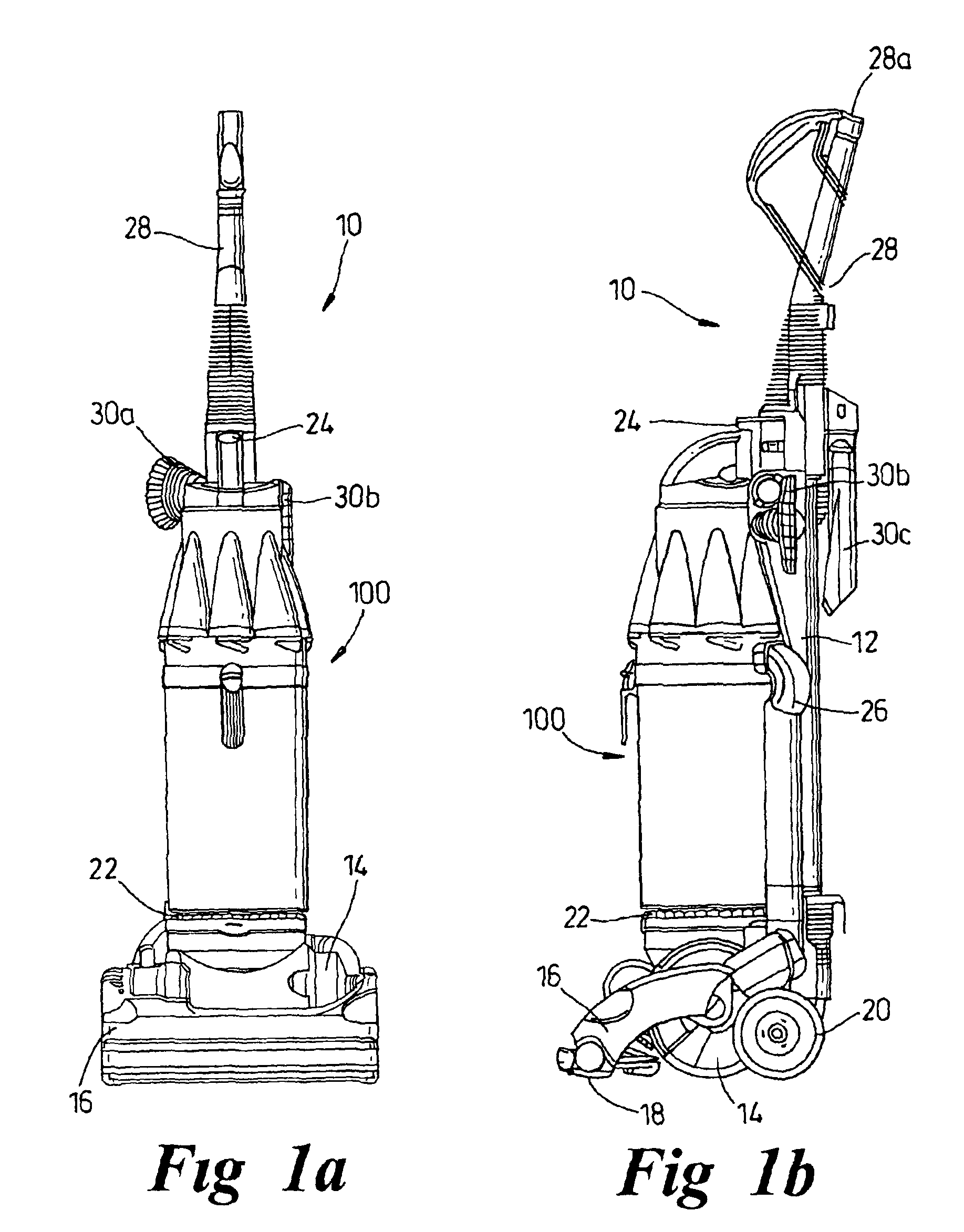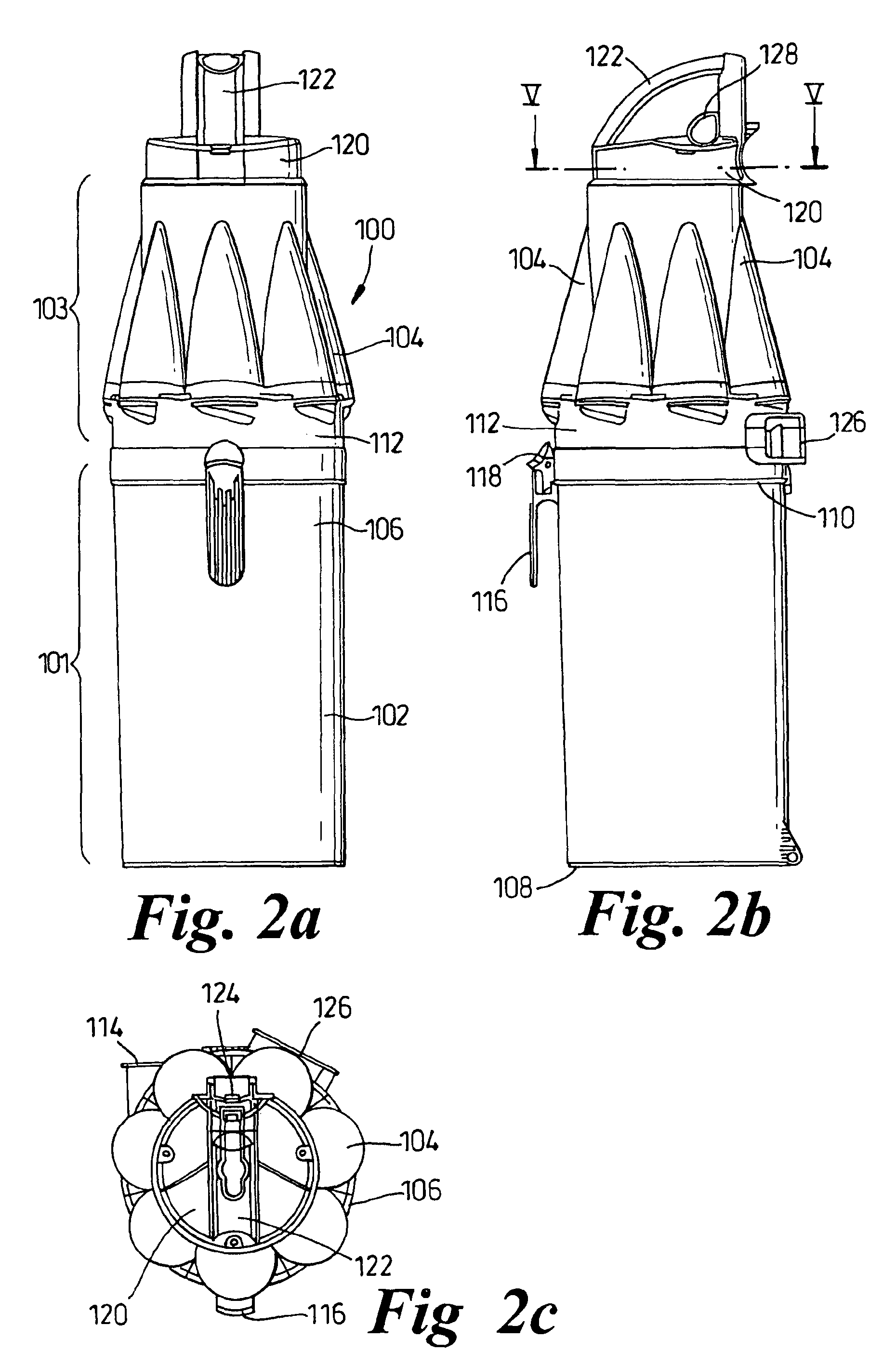Cyclonic separating apparatus including upstream and downstream cyclone units
a cyclone unit and separating technology, applied in the direction of liquid separation agent, filter regeneration, dispersed particle filtration, etc., can solve the problems of reducing the capacity of the cleaner, increasing the pressure drop across the system, and reducing the energy efficiency of the system, so as to improve the capacity for collecting separated particles, improve energy efficiency, and improve performance
- Summary
- Abstract
- Description
- Claims
- Application Information
AI Technical Summary
Benefits of technology
Problems solved by technology
Method used
Image
Examples
Embodiment Construction
[0020]FIGS. 1a and 1b show a domestic vacuum cleaner 10 incorporating a cyclonic separating apparatus according to the present invention. The vacuum cleaner 10 includes an upstanding body 12 at a lower end of which is located a motor casing 14. A cleaner head 16 is mounted in an articulated fashion on the motor casing 14. A suction inlet 18 is provided in the cleaner head 16 and wheels 20 are rotatably mounted on the motor casing 14 to allow the vacuum cleaner 10 to be maneuvered over a surface to be cleaned.
[0021]Cyclonic separating apparatus 100 is mounted on the upstanding body 12 above the motor casing 14. The cyclonic separating apparatus 100 is seated on a generally horizontal surface formed by a filter cover 22. The filter cover 22 is located above the motor casing 14 and provides a cover for a post-motor filter (not shown). The cyclonic separating apparatus 100 is also secured to the upstanding body 12 by means of a clip 24 located at the top of the cyclonic separating appar...
PUM
| Property | Measurement | Unit |
|---|---|---|
| angle of inclination | aaaaa | aaaaa |
| area | aaaaa | aaaaa |
| shape | aaaaa | aaaaa |
Abstract
Description
Claims
Application Information
 Login to View More
Login to View More - R&D
- Intellectual Property
- Life Sciences
- Materials
- Tech Scout
- Unparalleled Data Quality
- Higher Quality Content
- 60% Fewer Hallucinations
Browse by: Latest US Patents, China's latest patents, Technical Efficacy Thesaurus, Application Domain, Technology Topic, Popular Technical Reports.
© 2025 PatSnap. All rights reserved.Legal|Privacy policy|Modern Slavery Act Transparency Statement|Sitemap|About US| Contact US: help@patsnap.com



